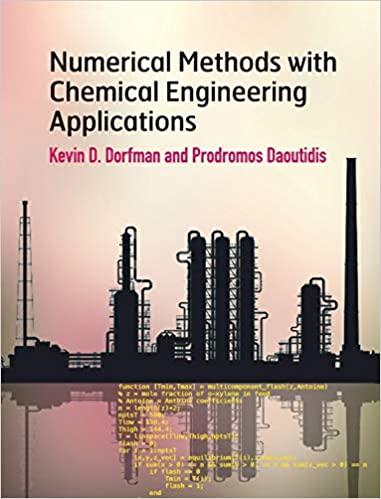In regions of the world where snow fall, snow plows are required to clear the snow from roads and from train tracks. In this

In regions of the world where snow fall, snow plows are required to clear the snow from roads and from train tracks. In this problem, you will use your control volume skills to examine a V-Wedge snow plow and analyze the design. See 1 for an example V-Plow for a train, or see this youtube video: http://www.youtube.com/ watch?v=n3pTSvQSH_E&feature=fvwp&NR=1 ARIS TOCK AFT Figure 1: A model train with a V-Plow (left), and a V-Plow in action (right) The following assumptions can be made for this problem: The wedge angle is the angle of the plow as seen from above. Assume any vertical velocity and momentum of the snow is negligible for this problem. The snow density is 150 kg/m. The max. snow depth that the plow is to be designed for is 0.3 m. The train velocity during plowing is 50 km/h. The train can be assumed to be is traveling in a straight line on a perfect level (not up or down a hill) The width of the region to be cleared is 1.85 m. Assume that the wedge angle is constant for all locations along the plow. Assume that the snow's interaction with the plow is inviscid. Assume that the snow is ejected from the side of the plow at a height greater than the snow on the ground. Please answer the following questions for the plow when plowing the maximum design snow depth (i.e. 0.3 m). When answering please clearly identify your control volume(s) and frame of reference. Please also state clearly any assumptions you have made or any additional information you have used in the solution process: 1. Determine the exit velocity and direction for the snow on either side of the plow as a function of wedge angle. 2. Determine and plot the force required to push the snow plow forward as a function of wedge angle. 3. What is the lateral force experienced by either side of the wedge, as a function of wedge angle? Please plot this value along with the pushing force. 4. What is the additional train power (beyond that necessary to move the train without any snow) required to plow the maximum amount of snow? 5. If asked to design a train plow wedge what angle would you choose and why? 6. If viscous effects were to be included, would you expect your answers to any of the above to be different? Discuss briefly.
Step by Step Solution
There are 3 Steps involved in it
Step: 1

See step-by-step solutions with expert insights and AI powered tools for academic success
Step: 2

Step: 3

Ace Your Homework with AI
Get the answers you need in no time with our AI-driven, step-by-step assistance
Get Started


